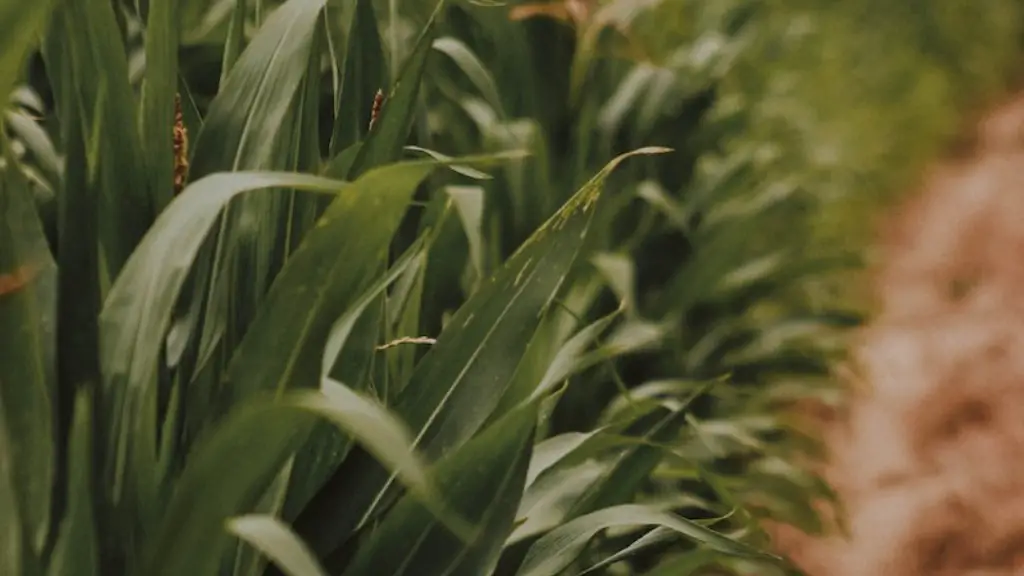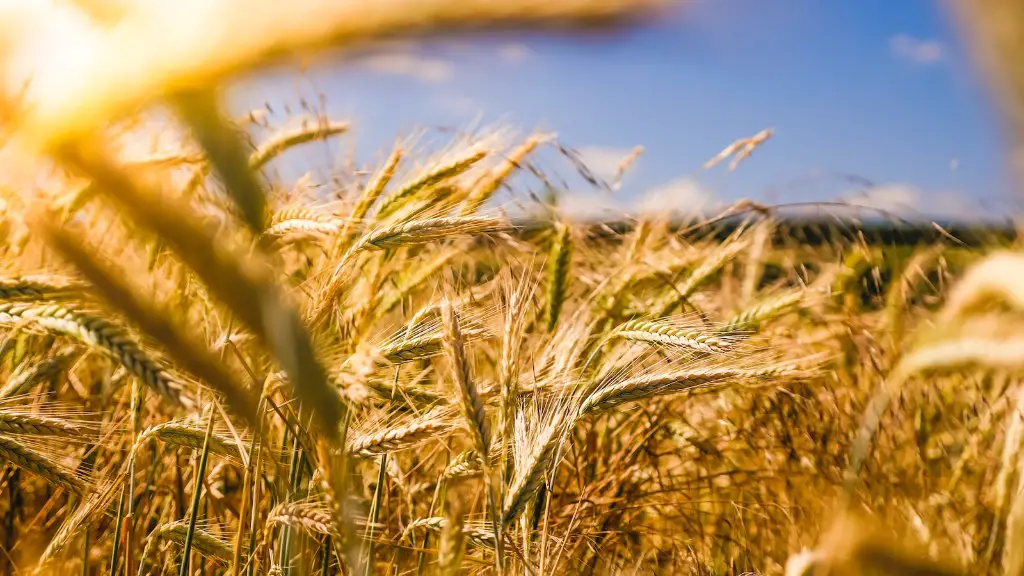The microscope is an essential instrument for agricultural research, enabling farmers and scientists to study in greater detail the behavior of organisms and the composition of soils. Microscopes can be used to identify, analyze and diagnose problems in the field, such as diseases, pest infestations and soil-borne pathogens. Moreover, they can assist in the identification of different crop varieties and in assessing their genotypic and phenotypic traits. Microscopy is also used for monitoring crop development, determining soil properties and fertility and in evaluating pest populations.
To use a microscope effectively in agriculture, farmers and researchers must understand the types of microscopy available and their appropriate uses. The two main types of microscopes used in the agricultural industry are light microscopes and electron microscopes. Light microscopes use visible light to magnify sample specimens, while electron microscopes use a beam of electrons to generate an image. Depending on the scope of the project being undertaken, either a light or electron microscope may be appropriate.
When using a microscope, whether it be a light or electron microscope, it is important to consider the size and nature of the sample being investigated. The microscopist should also determine the best illumination for the sample, taking into account its colour, surface reflectance and other characteristics. In addition, the relevant mounting medium should be chosen to ensure optimum image clarity. Finally, magnification settings should be carefully adjusted to ensure that the image is both sharp and clear.
The microscopist should also be aware of the limitations of the sample being studied. Not all specimens will provide the same resolution and contrast, which can limit the level of detail that can be seen. In addition, the microscope may have a limited capacity for magnifying an object and may need to be adjusted for different sized objects. Finally, the lighting used for the imaging technique should be appropriate for the specimen being examined.
It is also important to take note of the safety precautions when using a microscope. The sample should never be touched or handled directly, as this could damage or contaminate it. The microscope should also be maintained in a clean and dry environment and regularly serviced to keep it in good working order. Finally, only those trained and experienced in the use of a microscope should carry out any laboratory work.
Analyzing Plant cells
Microscopes are used to analyze plant cells and tissues, as they are a great tool for studying the structure, size, shape and surface characteristics of different species. Plant cells can be observed in higher detail than with a light microscope and can be readily examined under a variety of magnifications. Electron microscopes can be used to identify microorganisms present in the sample, such as viruses, parasites and fungi.
Plant cells and tissues can be examined for the presence of diseases, genetic mutations, and damage or changes caused by pests, as well as other possible abnormalities that affect the health of the plant. Microscopes are also used to identify pathogenic organisms, such as plant viruses, bacteria and fungi that can cause diseases in crops. In addition, microscopes can be used to analyze the effects of herbicides, insecticides and fertilizers on plant cells and to study the presence of beneficial organisms, such as beneficial fungi and soil microbes.
Microscopes can also be used to examine floral structures, such as pistils and stigmas, which are vital in the pollination and fertilization processes carried out by plants. The pollen grains of various species can also be studied in detail to identify individuals responsible for pollination.
Finally, microscopes can be used to identify the cells and metabolic pathways involved in the photosynthesis process carried out by plants. Photosynthesis involves the transformation of energy from sunlight into sugars and starches, which, in turn, provide energy for the plant’s growth and development.
Identifying Insects
Microscopes are also used to identify different species of insect pests, which can cause damage to crops. Insect pests can include aphids, caterpillars, spider mites, parasitic nematodes and fungal spores, among others. Through monitoring and identification of these pests, farmers and researchers can identify the areas of the crops that are most at risk and can be best managed. Microscopes can also be used to identify beneficial insects, such as Ladybugs, which can help protect and manage pest populations.
Observation through the microscope can provide scientists with information about the behaviors and life cycles of different species of insects, their anatomical structures and the species-specific characteristics that differentiate them from other insects. This information can also assist in the selection of appropriate insecticides and other control measures.
Microscopes can also be used to identify and monitor other beneficial insects, such as parasitoid wasps, which are able to parasitize pest insects and, thereby, help reduce their numbers. In addition, microscope examination of leaf litter can identify various predators that can help control pest insect populations in field crops.
The evaluation of insect feces, or frass, under a microscope may also provide useful information about insect species present in a crop. The DNA present in the frass can provide information about the shape, size, color and other morphological characteristics of the pests feeding on the crop.
Analyzing Soil
Soil analysis is a key component in understanding the health and productivity of a field crop. Microscopes can be used to examine different particles in the soil, such as clay particles, organic matter, fungi and other microorganisms. Through proofing and analysis, the microscopist can determine the presence of different chemical and mineral compounds in the soil, which may indicate critical deficiencies that could affect the growth of crops.
Soil textures, such as sand, silt and clay, can also be identified and analyzed in order to aid in the development of fertility plans. Different soil structures can support different types of crops and the appropriate retention of water and nutrients. A microscope can also assist in the detection of soil-borne pathogens, such as fungal spores or root rot, which can lead to poor crop yields.
The air-filled porosity, or voids, present in soil can be identified and studied through a microscope. These voids can affect root penetration and absorption of water by the crop and can also contribute to soil compaction. Different particles in the soil can also be measured, such as gypsum, limestone and gravel.
In addition, microscopes can be useful in the identification of weeds by examining the root and stem structures of various botanical species. This can provide insight into the weeds’ life histories and their ability to compete with crop plants.
Examining Fertilizers
Microscopes can be used to examine different types of fertilizer and evaluate their effectiveness in promoting crop growth. The presence of different forms of nitrogen, phosphorus and potassium, as well as trace elements, can be identified and their levels determined. Different types of fertilizer particles, such as pelletized, powder or granular, can also be observed and used to evaluate their effects on crop growth.
In addition, microscopes can be used to analyze the presence and levels of specific minerals in fertilizers, such as zinc and iron, which affect the health and growth of crops. The physical morphology of the fertilizer particles can also be studied, with respect to shape, size and homogeneity, as these characteristics may influence their absorption and retention by the crop.
The presence of small impurities and contaminants in the fertilizer can also be identified and studied, as these particles can reduce the effectiveness of the product, increase soil acidity and in some cases be toxic to the crop. Finally, the pH levels of different varieties of fertilizer can be determined in order to ensure that they are compatible with the soil type of the field in which they are to be applied.
Identifying Small Organisms
The use of microscopes in agriculture is not limited to the observation of plants and insects; they can also be used to examine and identify protozoa, arthropods, and other small organisms that inhabit the soil. A microscope can be used to identify species in a sample and to observe the behavior of organisms in their natural environment, such as microarthropods, nematodes and rotifers.
Moreover, microorganisms can be studied through microscopes to identify the beneficial organisms that can help decompose organic matter. This can provide useful information on soil fertility, as beneficial organisms can improve soil structure and increase the ability of a soil biota to decompose organic matter.
In addition, different types of soil fungi, such as mycorrhizae and saprophytes, can be studied for their ability to improve the absorption of water and nutrients by crop plants. Microscopes can also be used to examine the presence of plant-parasitic nematodes in the soil, which can damage or kill crops.
Finally, microscopes can be used to observe the behavior of microorganisms in relation to other soil organisms and the environment, in order to understand their ecology and interactions within the soil. In this way, it is possible to assess the impact of specific organisms on soil fertility and, consequently, on crop productivity.




